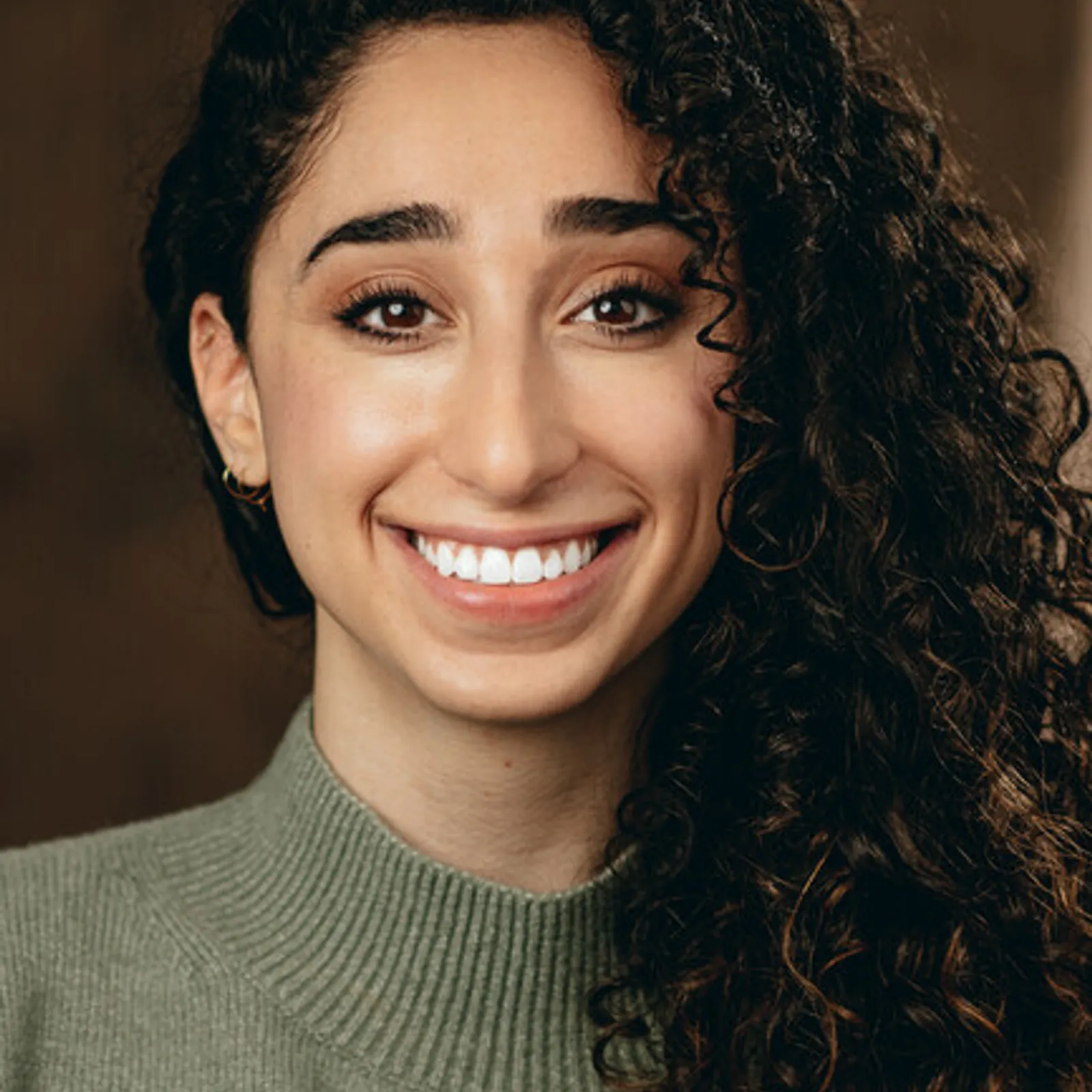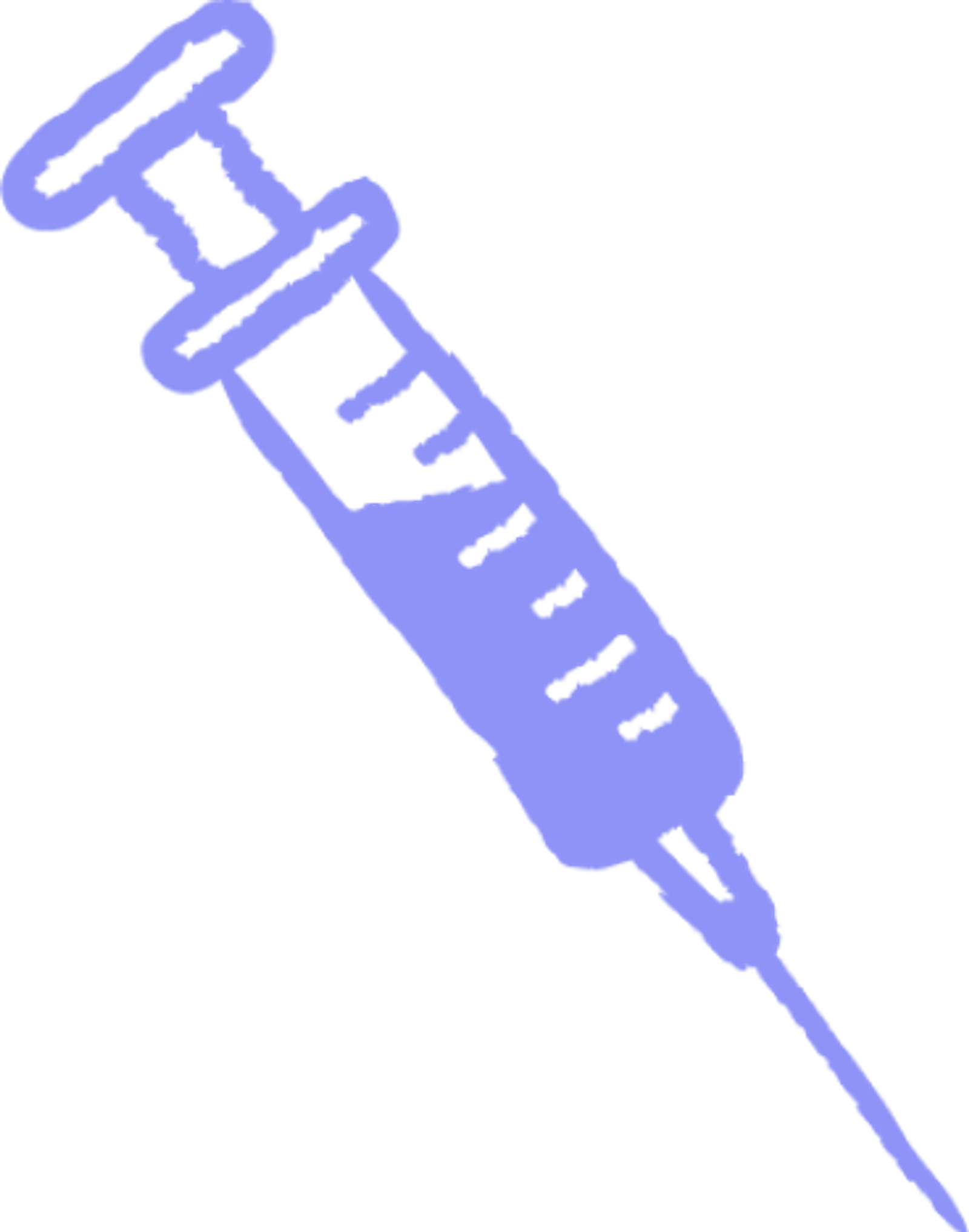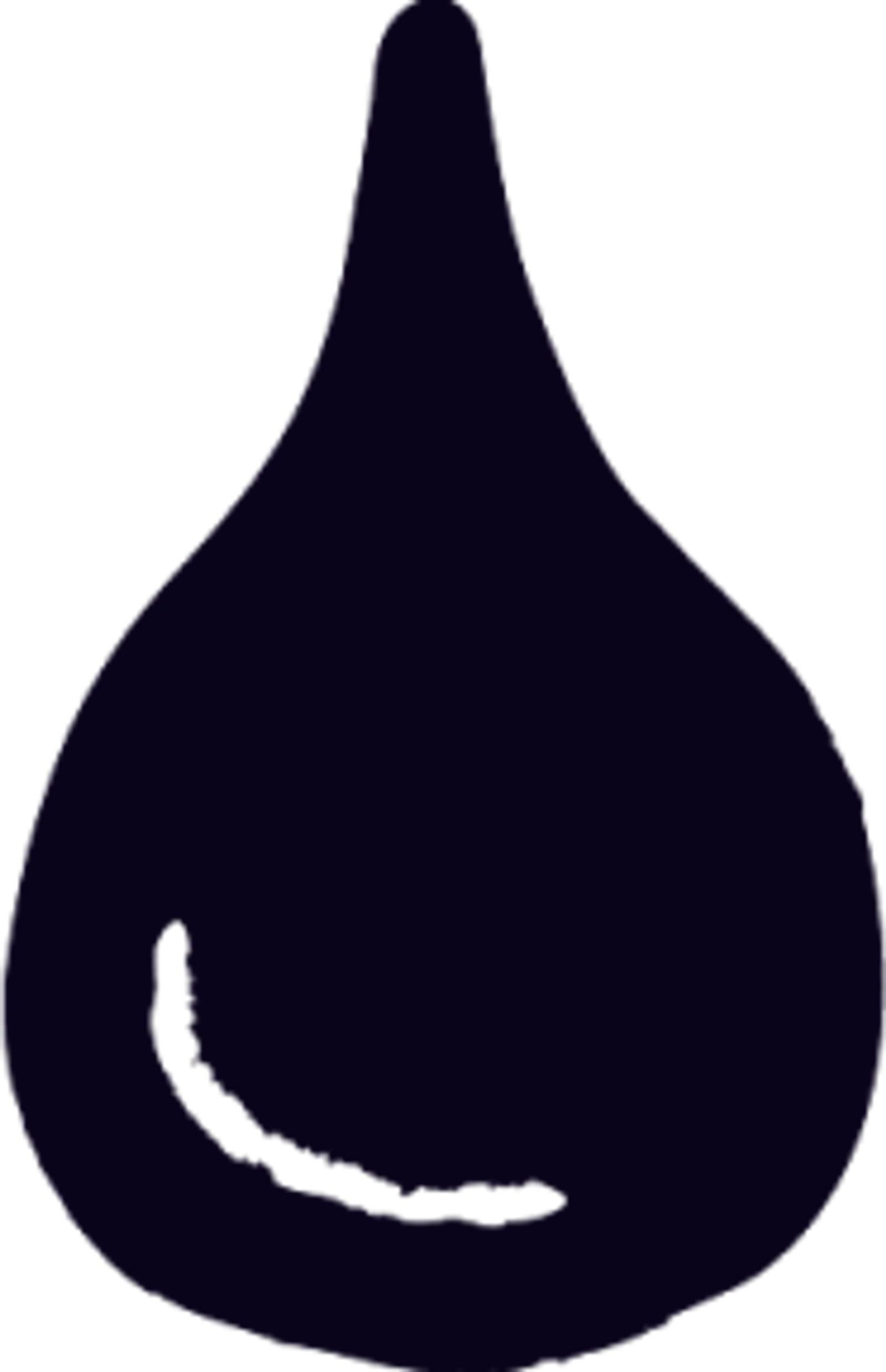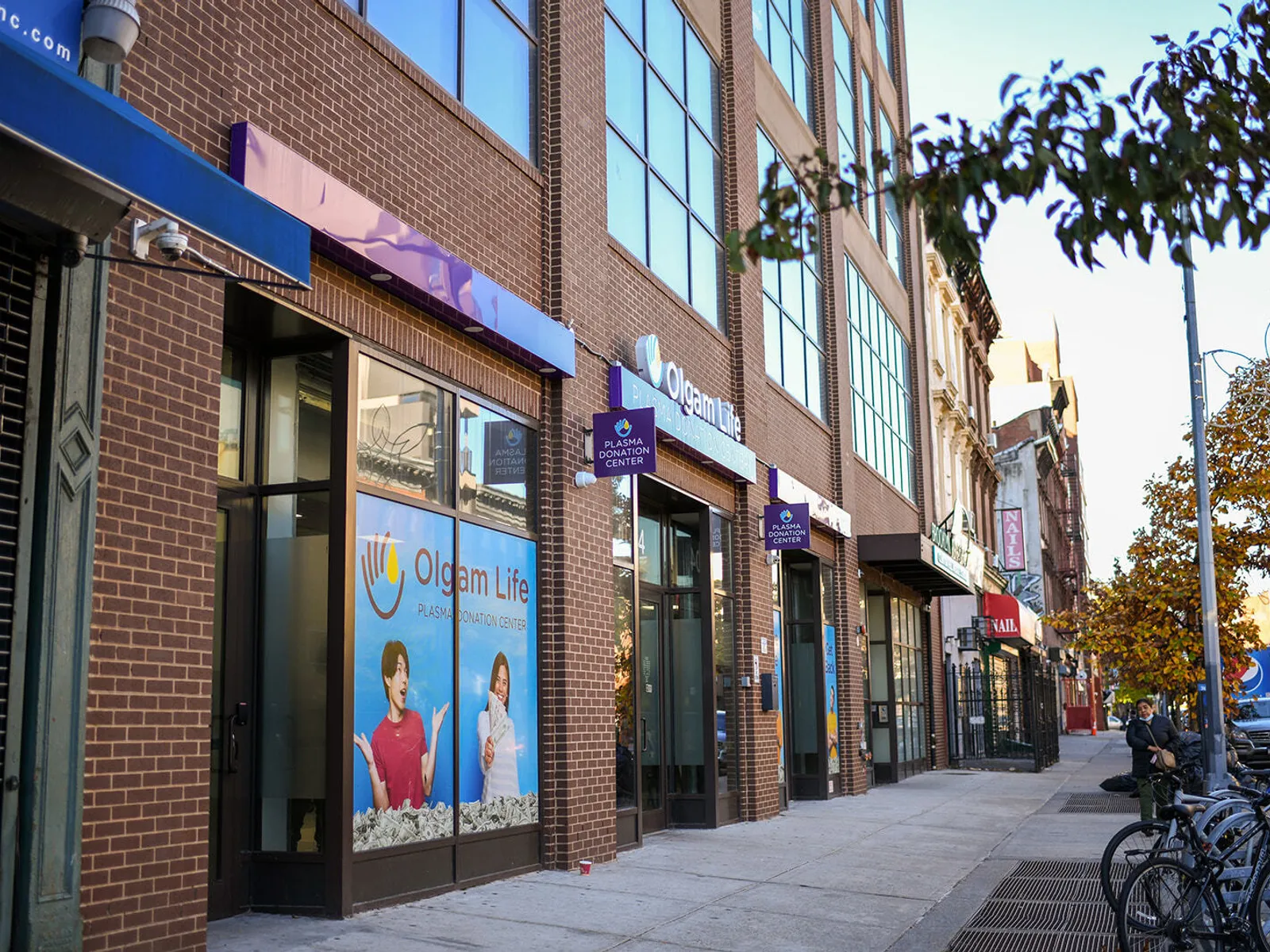Plasma 101
Who: Eligible donors between 18 and 64 can earn up to $560 a month in NY and up to $770 a month in FL.
What: Plasma is the yellow part of your blood that replenishes naturally.
Where: Queens, Brooklyn, The Bronx (NY), and Ft. Pierce (FL).
Why: Get paid to donate and help treat bleeding disorders, immune deficiencies, and more.
When: No appointment needed—walk in anytime before closing.

Blood clotting is vital to stop bleeding and enable healing after injury. But the intricate clotting process involves dozens of plasma proteins interacting in cascades and feedback loops. This article clearly details the central role plasma components play in coagulation. Learn how fibrinogen, prothrombin and other vital clotting factors propagate signals to form fibrin mesh clots that plug wounds.
Plasma contains over 20 proteins that interact to form blood clots. Vital clotting factors like prothrombin and fibrinogen circulate inactively until trauma occurs. Then intrinsic and extrinsic coagulation pathways sequentially activate them, ultimately generating thrombin bursts which cleave fibrinogen into fibrin strands. These fibers polymerize into meshes, aided by factor XIII crosslinking, to plug wounds and stop bleeding.
Key Components and Processes in Blood Clotting:
Title | Description |
Plasma Proteins in Coagulation | Plasma contains proteins like fibrinogen and prothrombin, which are activated upon vascular injury to form fibrin threads that create blood clots. |
Role of Platelets | Platelets are crucial for clotting, plugging wounds by adhering to vessel walls and each other, and speeding up coagulation reactions. |
Other Blood Cells | Red and white blood cells indirectly affect clotting, with red cells contributing to clot volume and white cells regulating inflammation. |
Extrinsic Blood Coagulation Pathway | Initiated by tissue factor outside blood vessels, this pathway involves factor VII, IX, and X, leading to fibrin clot formation. |
Intrinsic Blood Coagulation Pathway | Triggered inside blood vessels, this pathway starts with factor XII activation and involves a series of clotting factor activations leading to fibrin clot formation. |
How Plasma Contributes to Clotting | Plasma's key role is in the conversion of fibrinogen to fibrin by thrombin, forming the backbone of blood clots. |

Components of Blood Involved in Clotting
Plasma Proteins in Coagulation
Plasma contains vital proteins that initiate and propagate the clotting process. When a blood vessel is damaged, coagulation factors like fibrinogen and prothrombin are activated in a complex cascade to form fibrin threads that stick blood components together to plug wounds. These clotting factors circulating in plasma are inactive until trauma occurs.
Then a series of reactions converts them to active enzymes that interact to create the fibrin meshwork of clots. Although dozens of coagulation elements participate, fibrinogen cleavage to fibrin by thrombin is the central event.
The resulting fibrin strands form the scaffolding to which other blood elements adhere. Disorders of fibrinogen and prothrombin prevent normal clot architecture and can lead to bleeding or clotting abnormalities. Additionally, understanding the crucial role of plasma in coagulation underscores plasma’s significance in preventing and treating shock, further emphasizing the importance of plasma donation.
Role of Platelets
Beyond plasma proteins, platelets are equally crucial for effective clotting. Platelets are small cell fragments in blood that rapidly plug wounds by sticking to broken vessel walls and each other. When a vessel ruptures, subendothelial collagen is exposed.
Platelets bind to this matrix which activates them, causing a change in shape and release of biochemicals like ADP from their internal granules. These substances recruit and aggregate more platelets to the injury site. Activated platelet membranes also provide a catalytic surface to speed up coagulation reactions of plasma clotting factors.
This enhances fibrin production and crosslinking that helps stabilize the developing blood clot. Interference with platelet activation or aggregation can lead to increased bleeding after injury.
Other Blood Cells
While plasma and platelets are the most directly involved, other blood cells impact clotting in subtle ways. For example, red blood cells make up a large portion of clot volume and provide the red color. White blood cells secrete chemicals to trigger the coagulation cascade and regulate inflammation connected with clotting.
Although their roles are secondary, these formed elements of blood do interact with the proteins and platelets at the center of coagulation processes.
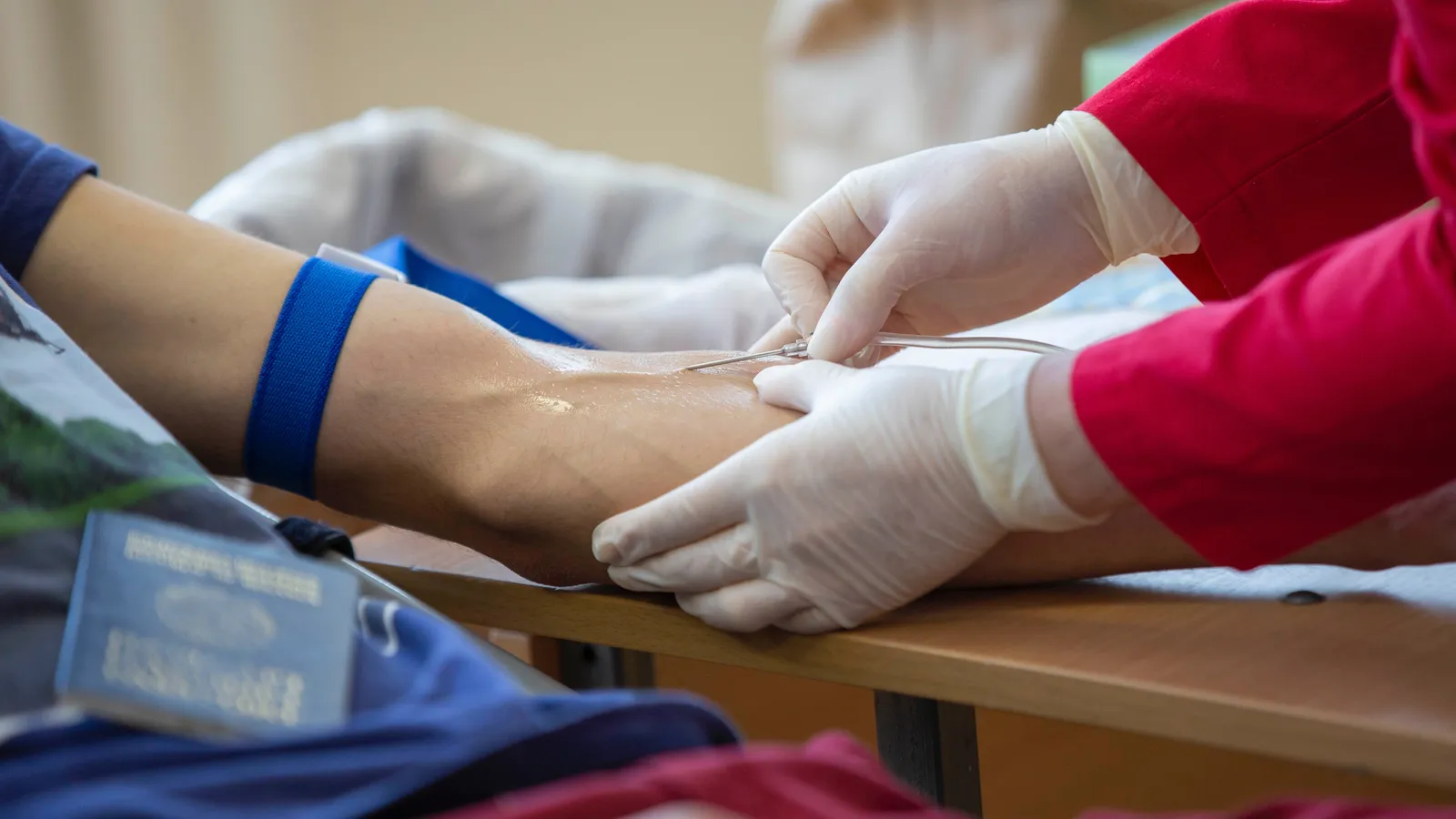
Extrinsic Blood Coagulation Pathway
Tissue Factor Activation
The extrinsic pathway refers to coagulation reactions triggered outside blood vessels. Tissue factor is a protein expressed on cell membranes that activates the cascade. When blood leaks into tissues at a wound site, factor VII circulating in plasma binds to tissue factor. This factor VIIa-tissue factor complex then activates factor X and factor IX to propagate clotting signals.
Small amounts of additional factor Xa and thrombin are generated to get the process rolling. So tissue factor provides the initial spark to ignite clotting via the extrinsic coagulation pathway after vascular injury. Once kickstarted, a series of amplification loops take over to generate fibrin clots.
Amplification of Coagulation Signals
The factor Xa and thrombin formed from tissue factor are insufficient alone to form clots. Feedforward loops rapidly build on the initial extrinsic pathway activation. Activated factor X from tissue factor converts prothrombin into more thrombin.
Thrombin then activates factor V into factor Va. Factor Xa and factor Va assemble on platelet surfaces as the prothrombinase complex that exponentially generates huge thrombin bursts. This thrombin then splits fibrinogen into fibrin that polymerizes into clot fibers.
So the minor amounts of initial clotting from tissue factor translate into abundant downstream thrombin and fibrin production through sequential positive feedback loops.
Regulation of Extrinsic Pathway
To prevent runaway extrinsic coagulation, regulation mechanisms exist to dampen the pathway once sufficient clotting has occurred. Tissue factor pathway inhibitor (TFPI) provides an important negative control element. TFPI neutralizes factor Xa and the tissue factor-factor VIIa complex to shut down further signaling. Protein S and endothelial cells also produce TFPI.
This helps constrain extrinsic pathway hyperactivity to the site of vascular injury. Another brake is activated protein C which degrades clotting factors Va and VIIIa to limit thrombin generation.
Together these feedback loops balance the explosive intrinsic pathway activation following tissue factor-induced clotting.
Intrinsic Blood Coagulation Pathway
Contact Activation
The intrinsic clotting cascade refers to reactions triggered inside blood vessels. It begins with contact activation when blood components touch certain charged surfaces. When blood leaks from vessels, factor XII binds to collagen and activates.
Factor XIIa then recruits plasma prekallikrein and high molecular weight kininogen. Together this complex of proteins autoactivates to induce the intrinsic coagulation pathway. Though the biochemistry is complex, this contact initiation provides the spark that ignites sequential clotting factor activation down the intrinsic cascade.
Signals amplify as the pathway proceeds to ultimately generate fibrin clot formation.
Sequential Activation of Clotting Factors
Once sparked, the intrinsic pathway involves a series of zymogen activations that sequentially propagate the coagulation signal. Activated factor XII cleaves factor XI into factor XIa.
Factor XIa then activates factor IX into factor IXa. Factor IXa complexes with factor VIIIa on platelet membranes to form tenase complexes. Tenase further processes factor X into factor Xa.
This intrinsic tenase complex feeds into the common pathway described earlier to ultimately generate abundant thrombin and fibrin. So the contact initiation triggers are greatly amplified through active clotting factors circulating in plasma.
Regulation of Intrinsic Pathway
Uncontrolled intrinsic coagulation risks clotting complications, so regulation helps constrain pathway hyperactivity. C1 inhibitor is a serine protease inhibitor that binds to intrinsic factors XIIa and XIa to halt propagation signals.
Antithrombin neutralizes free thrombin and other activated clotting proteases. Protein Z dependent protease inhibitor and heparin cofactor II also dampen intrinsic clotting. Together these brakes prevent the explosive intrinsic cascade from proceeding out of control beyond localized clotting at proper injury sites near activating blood vessel collagen.
Careful regulation prevents thrombosis issues that could otherwise emerge. Thrombotic thrombocytopenic purpura (TTP) is an example of how maintaining a delicate balance in plasma components is essential for preventing adverse conditions. The intricate regulation ensures not only effective coagulation for wound healing but also guards against conditions like TTP, highlighting the critical role of plasma in both maintaining and restoring health.
How Plasma Contributes to Clotting
Fibrinogen Conversion by Thrombin
The most pivotal plasma protein event in coagulation is fibrinogen cleavage into fibrin by the enzyme thrombin. Fibrinogen is an abundant 340 kDa soluble precursor circulating in blood.
When vascular injury occurs, explosive intrinsic and extrinsic signals converge to generate bursts of thrombin at sites of damage. This thrombin then catalyzes the release of fibrin peptides from fibrinogen to create insoluble fibrin strands that form the backbone of blood clots.
These fibrin fibers polymerize and branch to form gel-like meshes that plug wounds and provide the infrastructure that traps other clotting elements like platelets and red blood cells.
Factor XIII Crosslinking Activity
To reinforce fibrin clots, factor XIII adds critical stability by crosslinking fibrin polymers. Factor XIII is activated by thrombin into factor XIIIa. This transglutaminase enzyme then forms amide bonds between glutamine and lysine residues on adjacent fibrin fibers. This crosslinking allows clots to become more elastic and deformation resistant.
By bolstering the fibrin matrix, factor XIII ensures mature clots remain intact to successfully stem bleeding even under shear flow pressure in vessels. Strengthening of clot architecture by factor XIII is vital for durable wound sealing.
Role of Calcium Ions
Beyond coagulation proteins, calcium ions serve key cofactor roles at multiple steps along the clotting cascades. Many clotting factors like VIIa, IXa and Xa require calcium for optimal functioning and assembly into active enzyme complexes on membranes. The tenase and prothrombinase complexes also depend on calcium.
And the final common pathway demands calcium to facilitate fibrin formation from fibrinogen by thrombin. So while not a traditional enzyme, this inorganic ion activates central reactions for intrinsic, extrinsic and common pathway coagulation. Calcium binding enables key proteases to interact, achieving the ultimate goal of fibrin clot deposition.
The Importance of Clotting in the Body
Preventing Excess Blood Loss
Rapid clot formation after vascular injury is critical to prevent excessive hemorrhage and hypovolemic shock. When vessels rupture, the body quickly activates coagulation pathways to form platelet-fibrin clots that plug wounds.
This arrests bleeding and prevents ongoing loss of blood volume. Excessive anticoagulation can lead to uncontrolled internal or external bleeding that becomes difficult to staunch. So the capacity to generate rapid clots upon trauma is evolutionarily advantageous to curtail blood loss to non-lethal levels after accidents.
Olgam Life plasma donors provide vital clotting elements like fibrinogen to support hemostatic functions.
Blocking Bacteria from Spreading
Beyond retaining blood, clots also serve to wall off infections. Platelet-rich clots form barriers that trap bacteria and prevent their dissemination through the vascular system. Containing pathogens speeds immune cell accumulation to clear bacteria and fights sepsis.
So clotting physically restricts circulating microbes while also concentrating antimicrobial chemicals around infected foci. This boosts innate immunity against invasive foreign pathogens introduced through wound contamination.
Blocking microbial spread promotes recovery by averting systemic infection proliferation after insults like trauma or surgery.
Promoting Wound Healing
How does plasma support wound healing and recovery? The provisional fibrin matrix laid down during coagulation later supports new tissue formation needed for healing. Platelets embedded in clots release growth factors like PDGF, VEGF and TGF-beta that promote cell migration and proliferation at injury sites.
Angiogenesis pathways rebuild vascular networks to nourish recovering wounds. And fibroblasts utilize the fibrin-fibronectin scaffold as an anchoring template to rebuild damaged extracellular matrix.
So the structures formed during the initial clotting response stimulate regenerative pathways to restore anatomical integrity after blood vessel damage. Clotting kickstarts downstream tissue repair processes.
Clotting Disorders and Their Implications:
Title | Description |
Hemophilia | Caused by deficiencies in clotting factors (VIII in Hemophilia A, IX in Hemophilia B), leading to spontaneous bleeding and joint damage. Treatment involves factor infusions. |
Von Willebrand Disease | Characterized by low levels of Von Willebrand factor, affecting platelet adhesion and clot formation. Treatment includes replacement of Von Willebrand factor and factor VIII. |
Liver Disease | Advanced liver conditions impair the production of clotting factors, leading to complex deficiencies and increased bleeding risks. Treatment involves plasma or pro-coagulant drugs. |
Importance of Clotting | Clotting prevents excessive blood loss, blocks bacteria from spreading, and promotes wound healing. |
Role of Calcium Ions | Calcium ions act as cofactors in various steps of the clotting cascades, essential for the functioning of many clotting factors. |
Factor XIII Crosslinking Activity | Factor XIII stabilizes fibrin clots by crosslinking fibrin polymers, crucial for maintaining clot integrity. |
The Role of Plasma in Clotting Disorders
Hemophilia
What is hemophilia? Hemophilia arises when mutations decrease activity of intrinsic pathway clotting factors made in the liver. Hemophilia A is caused by factor VIII deficiencies which blocks amplification signals. Hemophilia B stems from low factor IX which cannot properly activate factor X. In either case, reduced thrombin generation diminishes fibrin clot formation.
Patients experience spontaneous bleeding episodes into joints and soft tissues which can be internal or external. Without treatment, recurrent hemorrhage events cause destructive arthritis and debility over time. Infusions of factor VIII or IX clotting factors can provide replacement proteins to suppress incidents.
Olgam Life plasma donors supply the raw materials to extract these concentrates.
Von Willebrand Disease
Beyond hemophilia, low levels of Von Willebrand factor also disrupt clotting and platelet plug formation. Von Willebrand protein is required for platelets to stick at wound sites and for carrying factor VIII.
With deficiency, vascular injury cannot form effective platelet-rich thrombi which allow leakage. Low high molecular weight multimers of the Von Willebrand factor cause abnormal bleeding similar to hemophilia.
This often first appears as easy bruising, frequent nosebleeds or bleeding gums. Treatment involves replacement of Von Willebrand factor along with factor VIII to overcome low intrinsic pathway activity and poor platelet adhesion.
Liver Disease
Finally, advanced liver disease like cirrhosis impairs production of most plasma clotting elements. Chronic hepatitis, alcoholism and non-alcoholic fatty liver disease can all reduce functional liver tissue. With loss of clotting factor synthetic capacity, complex deficiencies emerge
Combined low levels of vitamin K-dependent factors (II, VII, IX, X), elevated INR values, low fibrinogen and dysfibrinogenemia manifest as a hemorrhagic coagulopathy. This significantly raises the chances of uncontrolled bleeding during trauma, surgery or gastrointestinal ulceration. Plasma or pro-coagulant drugs can rebalance hemostasis.
Olgam Life operates in numerous locations. Distinct from numerous plasma donation services, Olgam Life exclusively emphasizes the aggregation phase of the donation procedure, allowing us to concentrate more attentively on the well-being of our donors. For more guidance or if you have any questions, chat with us!
